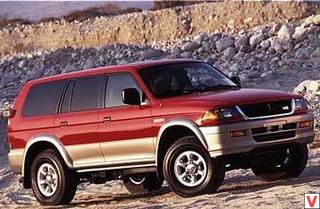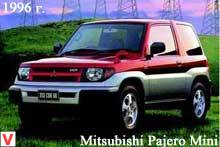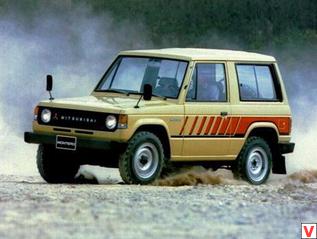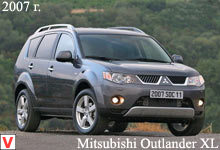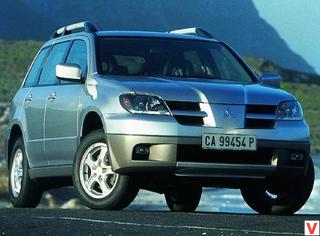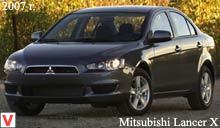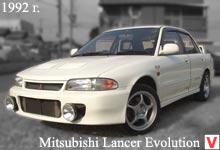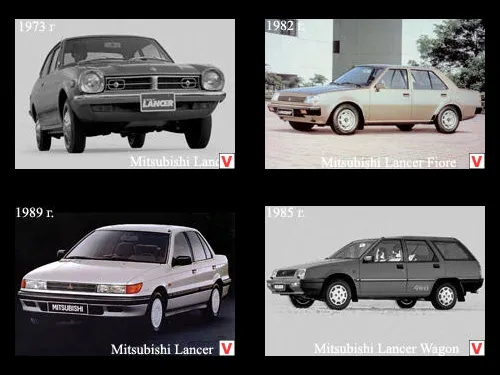
The first time Mitsubishi Lancer was introduced to the world market in 1973. The car was originally conceived as a mass model and had to take an intermediate place between the mid-size Galant sedan and the compact Minica hatchback. It was a rear wheel drive car, and it was produced in 12 versions with four-cylinder engines in the Saturn family of 1.2, 1.4 and 1.6 liters. The choice offered three types of body - coupe, sedan and station wagon, the latter already had the designation Station Wagon, preserved to this day. The exterior of the car was distinguished by its wide profile and swift front end.
Guarding the safety of the driver and passengers was a high strength and rigidity of the body, disc brakes with redundant main brake cylinder and a crash steering column. The first charged version of the Lancer was the model with an index of 1600 GSR, which won the East African Safari Rally three times from 1974 to 1976. Under the hood of this version was an engine with two carburetors, with it the car overcame a 400-meter distance in 16.4 seconds. In 1975, a three-door hatchback Mitsubishi Lancer Celeste appeared with a completely new body. The car was produced with 1.4 and 1.6-liter engines, then 2-liter was added to them.
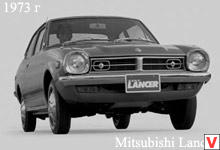
This model was actively exported - in the USA it was sold under the name of Plymouth Arrow, in Australia - the Chrysler Lancer Coupe. In 1976, the second-generation Mitsubishi Lancer entered the series, which in fact was an upgrade to an existing car. The car became more angular and this time it was made only in a four-door body. The main changes are a different design of the front end and enlarged bumpers that meet US safety standards: from the end of 1976, Lancer began to be supplied to the USA, where it was sold under the name Dodge Colt. The third generation of the model appeared in 1979 and was called the Lancer EX in Japan.
The Italian designer Aldo Cezano worked on the style of this generation. The highest level of comfort for those times was created by an elegant trim, comfortable seats made of polyurethane and first-class air conditioning. The interior has become more spacious, and the four-link independent has replaced the dependent rear suspension. Initially, only two engines were offered - with a volume of 1.4 and 1.6 liters. Both have been applied proprietary technology Silent Shaft with two balance shafts to reduce vibrations.
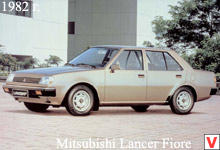
In 1980 he debuted the Lancer with the 1.8 engine, which was available in both atmospheric and turbocharged versions. And for some markets offered Lancer 2000 Turbo with a two-liter engine producing 170 hp. In 1981, there was a "budget" version with the engine 1.2. Rear-wheel drive cars were produced until 1982, when they were replaced by the Lancer Fiore (translated from Italian fiore - “flower”) - the first front-wheel drive in the family. The base for the fourth generation Lancer served as the Mitsubishi Mirage. The body design has been applied smooth streamlined shape, emphasizing the excellent aerodynamics of the car.
The impressive glazing area and unique lighting devices have become the hallmark of the model. Gamma of power units offered engines in working volume from 1.2 to 1.6 liters. The 1.4 turbocharged engine, which developed 105 hp, stood alone. As an alternative to the manual transmission, an optional three-step “automatic” was offered. One year later, in 1983, the fifth generation Lancer was introduced. There were engines with fuel injection and turbochargers.
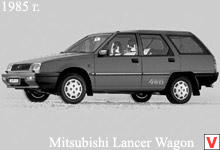
The top version, for example, was equipped with a turbocharged engine (1.6 liters, 120 hp). The novelty was a diesel engine of 1.8 liters. In addition, a modification with a 1.5 liter engine equipped with an MD (Modulated Displacement) system was first proposed. It allowed for some time to disconnect two of four cylinders and thereby save from 10% to 20% of fuel.
In 1985, the Mitsubishi Lancer with the station wagon station wagon was introduced, which a year later acquired a modification with permanent all-wheel drive. The wagon was distinguished by its functionality and unique design. It harmoniously combined spaciousness and comfort of the cabin, high directional stability and smoothness. As the power units, the 1500 Orion II gasoline engine and the 1,800 diesel Sirius were used, which provided fuel efficiency and high power. The 1500 Orion II engine model was equipped with an electrically driven carburetor to regulate the optimal composition of the air-fuel mixture depending on driving conditions.
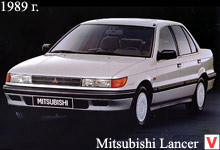
The 1800 Sirius diesel engine was equipped with glow plugs, which provided quick warming up of the combustion chamber. In 1988, the sixth generation Lancer appeared. The car was offered with two types of bodies - a sedan and a five-door hatchback.
At the same time, the wagon of the old generation was not withdrawn from production. There are five engines to choose from, including a 16-valve 1.6-liter (124 hp) and 1.8-liter diesel (60 hp). The base modification of the Lancer 1.3 was fitted with a 69 hp carburetor engine, while other gasoline engines were equipped with a fuel injection system. Offered and all-wheel drive version. In the fall of 1991, the “seventh” Lancer was presented at the Tokyo Motor Show. A year later, a versatile version appeared (Libero in the Japanese market), and the hatchback disappeared from the production program.
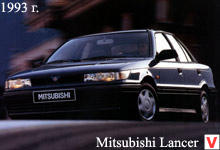
The two-door coupe in Japan was called the Mirage Asti Coupe, and in foreign markets the Lancer Coupe. For Europe, three engines were offered - gasoline of 1.3 and 1.6 liters, as well as a two-liter diesel engine. Along with a wide choice of various engines, all modifications were completed with automatic transmissions with electronic control and original adaptive “automatic” Mitsubishi INVECS-4A / T.
The car was distinguished by a high level of active and passive safety, best-in-class handling and fuel economy. The seventh generation was remembered primarily by the GSR version, which marked the beginning of the legendary Evolution family. It was put on the 4G93 turbo engine of 1.8 liters capacity of 195 hp.
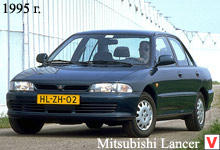
and all-wheel drive transmission from the Galant VR-4. In the Japanese market was another exotic version - with the smallest V6 at the time, the engine size was 1.6 liters. In March 1995, Mitsubishi Lancer made his eighth generation debut with a rougher and “faceted” appearance. Of the available bodies, only the sedan remained, although in some markets a coupe was also offered. The driver’s airbag was standard equipment, and a passenger airbag was offered for a surcharge.
European buyers were offered two gasoline engines of 1.3 and 1.6 liters. In other countries, the choice of power units was much broader. In 2000, Japan began selling the ninth-generation Mitsubishi Lancer, which received its own name Cedia, although the majority of foreign markets still offered the eighth-generation Lancer. The Cedia was available in two body styles: the Station Wagon sedan and station wagon. In 2002, Cedia appeared in the USA and Australia. For the European market, the result of the Cedia restyling conducted in 2003 is considered to be the ninth generation Lancer for the European market.
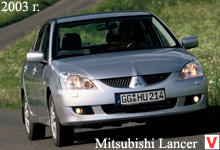
The car was offered with a sedan and wagon, and from the Japanese version of the Lancer Cedia different design of the front. The car received a slightly aggressive “muscular” shape, underlined headlights, double radiator grille and a central element with a large chrome emblem. The overall height of the Lancer IX is more than 50 mm than the predecessor, and the overall length is 185 mm, which has a positive effect on the capacity of the passenger compartment and the luggage compartment.
Thanks to the wheelbase extended by 100 mm, the ninth-generation Lancer has 60 mm more legroom for front and rear passengers. The salon combines comfort and convenience, every detail is carefully thought out and calculated. Adjustable driver's seat, adjustable steering wheel, simple rotary knobs for controlling air conditioning and heated seats provide intuitive controls. Lancer IX with a sedan body was offered with three injection petrol engines: 1.3, 1.6 and 2.0 liters.
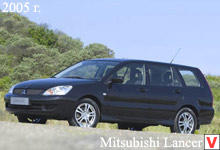
In these modern engines, Mitsubishi makes extensive use of lightweight alloys for weight reduction, as well as a 16-valve timing system. This provides high fuel efficiency and low exhaust emissions. The manufacturer offered three gearboxes: a 5-speed manual for the 1.3-liter engine, a 4-speed automatic with a manual shift mode for the 1.6 engine and a 5-speed for the 2.0-liter version. In the Japanese market, the Lancer was offered with engines of 1.5 and 1.8 liters, while in North America a version with a 2.4-liter four-cylinder engine (164 hp) was sold.
Independent suspension (front type MacPherson, rear - multi-link with the effect of passive steering) provides the Lancer with a combination of riding comfort and high directional stability, achieving the highest possible grip. It is very energy-intensive and provides smooth running and high reliability on the road with any surface, whether it is asphalt, gravel, icy road or country road. Lancer IX received the most modern systems of active and passive safety: reliable chassis with perfect independent suspensions, providing high stability and the absence of excessive body rolls, informative steering with a clear action.
ABS helps to maintain directional stability during heavy braking on slippery surfaces. The EBD (Electronic Brake Distribution) system improves brake efficiency, always taking care of the ideal distribution of brake forces between the front and rear wheels for any load. The car was equipped with air bags, seat belts with pretensioners and force limiters. In case of an accident, a crash-proof steering column is destroyed in specially designed places, “leaving” from the driver.
